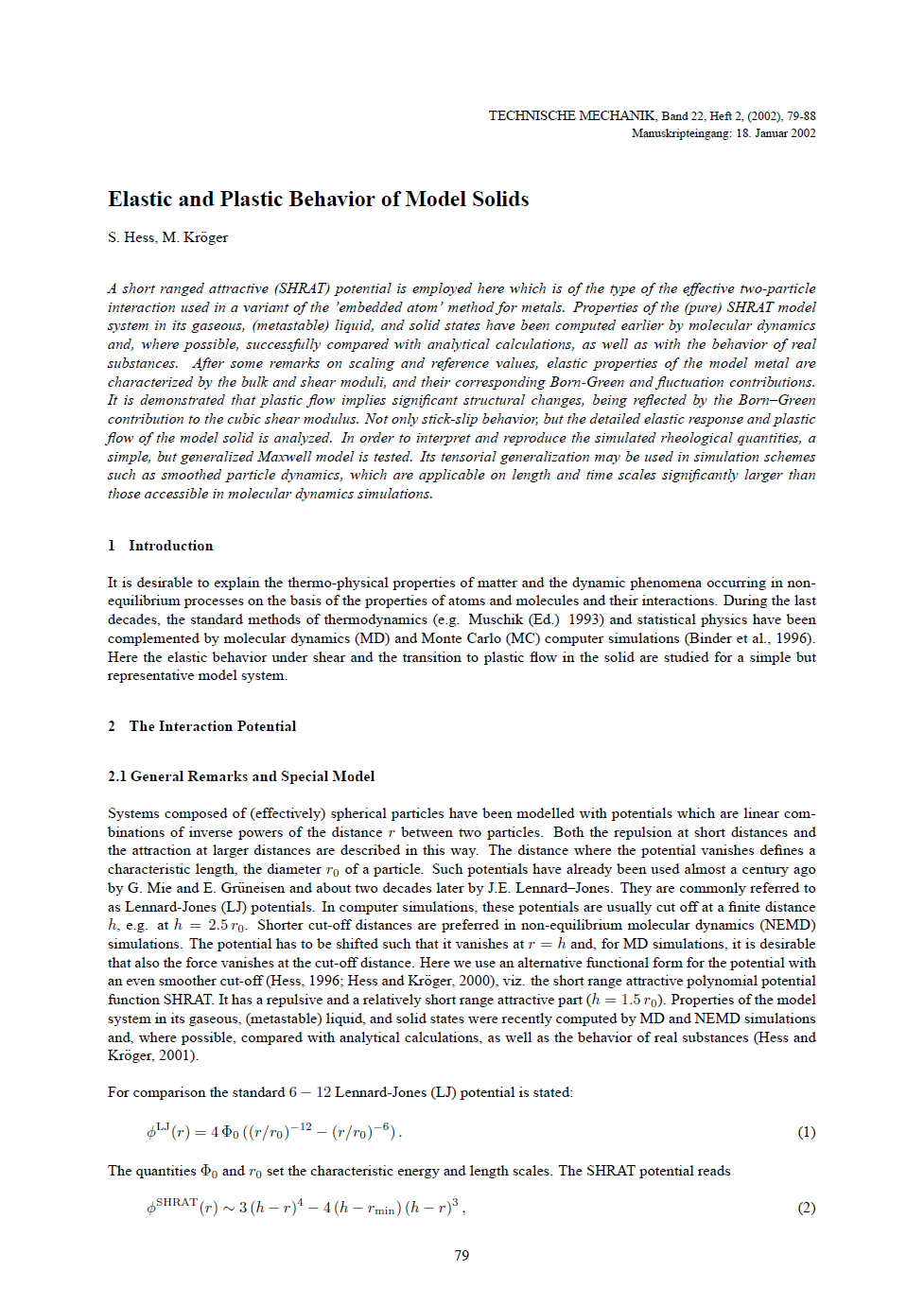Elastic and Plastic Behavior of Model Solids
Abstract
A short ranged attractive (SHRAT) potential is employed here which is of the type of the effective two-particle interaction used in a variant of the ’embedded atom’ method for metals. Properties of the (pure) SHRAT model system in its gaseous, (metastable) liquid, and solid states have been computed earlier by molecular dynamics and, where possible, successfully compared with analytical calculations, as well as with the behavior of real substances. After some remarks on scaling and reference values, elastic properties of the model metal are characterized by the bulk and shear moduli, and their corresponding Born-Green and fluctuation contributions. It is demonstrated that plastic flow implies significant structural changes, being reflected by the Born–Green contribution to the cubic shear modulus. Not only stick-slip behavior, but the detailed elastic response and plastic flow of the model solid is analyzed. In order to interpret and reproduce the simulated rheological quantities, a simple, but generalized Maxwell model is tested. Its tensorial generalization may be used in simulation schemes such as smoothed particle dynamics, which are applicable on length and time scales significantly larger than those accessible in molecular dynamics simulations.





